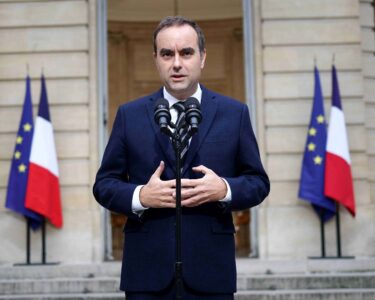Summary
- Spain’s deadliest floods in modern history leave 217 dead
- Residents express anger over delayed flood alerts and slow emergency response
- Thousands of troops deployed in large-scale cleanup operation
PAIPORTA, Spain – Hundreds of residents from a Valencia suburb, heavily affected by last week’s deadly floods, protested on Sunday during a visit by Spanish King Felipe, Queen Letizia, and Prime Minister Pedro Sanchez. Some demonstrators even threw mud at them.
Chanting “Murderers, murderers!” they vented pent-up anger over what has been widely perceived by local residents as tardy alerts from the authorities about the dangers of Tuesday’s flooding, and then a late response by the emergency services when disaster struck.
“Please, the dead are still in the garages, the families are looking for their relatives and friends. Please come, we only ask for help … All we wanted was to be warned and we would have been saved,” yelled one resident, Nuria Chisber, with tears in her eyes.
 A view shows destroyed Albufera rice fields in an area affected by heavy rains that caused flooding near Valencia, Spain, October 31, 2024. REUTERS/Nacho Doce/File Photo
A view shows destroyed Albufera rice fields in an area affected by heavy rains that caused flooding near Valencia, Spain, October 31, 2024. REUTERS/Nacho Doce/File Photo
“It was known, and nobody did anything to avoid it,” a young man told the king, who insisted on staying to talk to people despite the turmoil, while the prime minister had quickly withdrawn. Spain is a parliamentary monarchy where the king is head of state.
At one point in the visit to the stricken suburb of Paiporta, Felipe, wearing a simple dark raincoat, distinguishable from distance by his height and grey hair, held to his shoulder a man who was crying. Online footage showed his wife, Letizia, crying as she hugged some residents. Her hair and face had traces of mud and one of her bodyguards had blood on his face, apparently from a hurled object. Bodyguards had opened umbrellas to try to protect the royals.
The death toll from the country’s worst flash floods in modern history edged higher to 217 on Sunday – almost all in the Valencia region and over 60 of them in Paiporta alone.
Some of Sunday’s protesters wore clothing with the symbols of far-right groups which often stage protests against the leftist government. “We are not going to get sidetracked by some marginal acts,” Sanchez said, referring to the incidents and the need to repair damage caused by the flood. Photos showed his official car with windows broken.
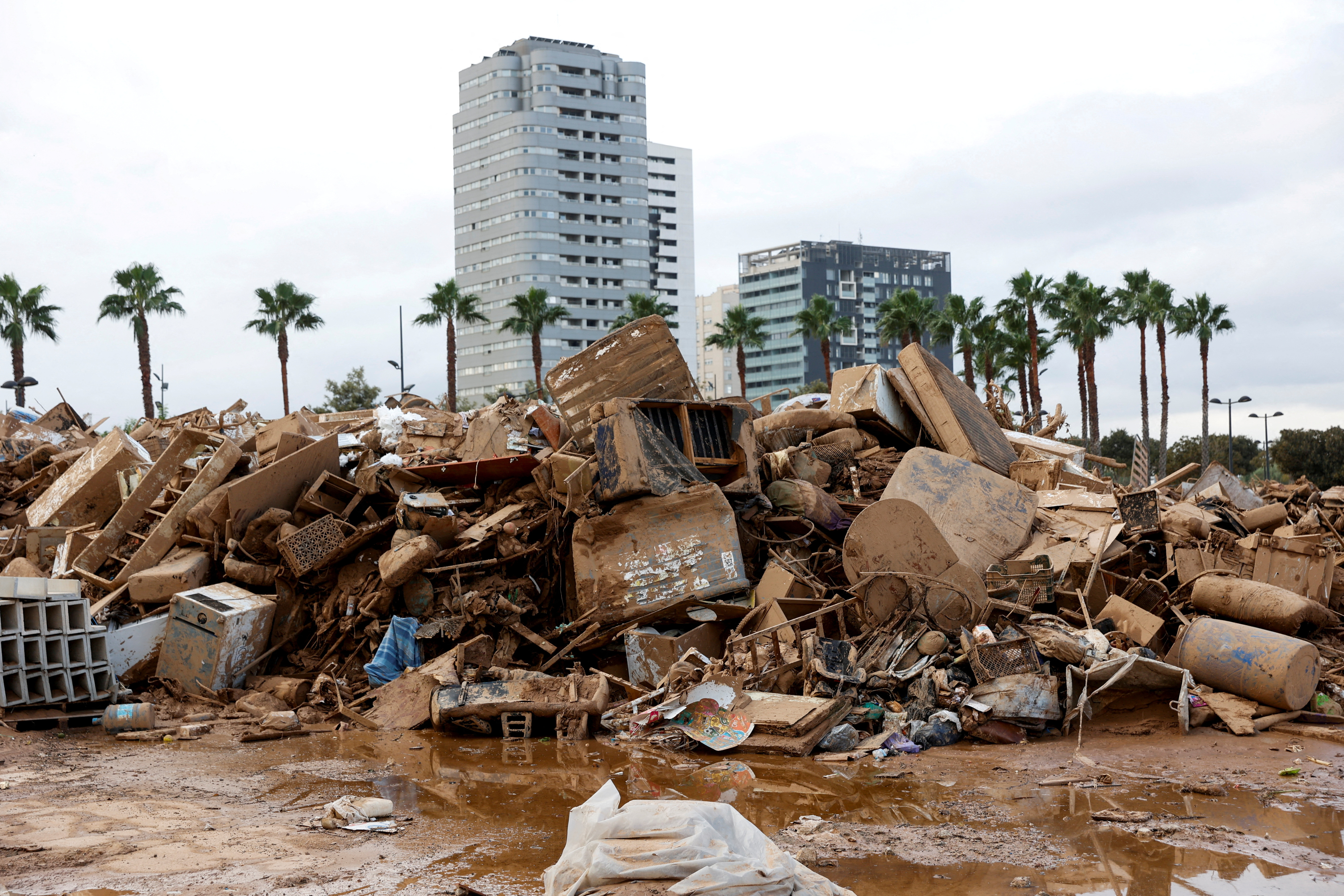 A view of mud and debris, following heavy rains that caused floods, at La Torre neighborhood in Valencia, Spain, November 3, 2024.
A view of mud and debris, following heavy rains that caused floods, at La Torre neighborhood in Valencia, Spain, November 3, 2024.
As the king tried to calm the mood, he also referred to attempts by agitators to destabilize the situation. “There is a lot of toxic information going around and a lot of people interested in chaos,” he told the crowd.
As the visit continued and rain started drizzling, police cars with loudspeakers drove around Valencia, warning of more heavy rains coming later on Sunday.
BLAME GAME
The central government has said issuing alerts to the population is the responsibility of regional authorities. But the Valencia authorities have said they acted as best as they could with the information available to them.
According to officials, dozens of people remain unaccounted for, and around 3,000 households are still without electricity. “With timely warnings to the public, many fatalities could have been avoided,” said Jorge Olcina, a climate expert at the University of Alicante. He noted a lack of coordination between national and regional authorities but acknowledged that the scale of the disaster made it “difficult to manage.”
 A man stands next to stranded cars, following floods in Sedavi, Valencia, Spain, October 31, 2024. REUTERS/Susana Vera.
A man stands next to stranded cars, following floods in Sedavi, Valencia, Spain, October 31, 2024. REUTERS/Susana Vera.
Prime Minister Sanchez said on Saturday that any possible negligence would be investigated and called for political unity in the face of the tragedy.
Valencia’s regional leader, Carlos Mazon, also visited Paiporta to boos and insults from protesters, posted on X: “I understand the public anger and of course I will stay to receive it. It is my political and moral obligation. The King’s attitude this morning has been exemplary.”
Thousands of additional troops and police joined the disaster relief effort over the weekend in the largest such peacetime operation in Spain. The floods engulfed streets and lower floors of buildings, sweeping away cars and pieces of masonry in tides of mud.
The tragedy is already Europe’s worst flood-related disaster in a single country since 1967, when at least some 500 people died in Portugal. Scientists say extreme weather events are becoming more frequent in Europe and elsewhere due to climate change. Meteorologists think the warming of the Mediterranean, which increases water evaporation, plays a key role in making torrential rains more severe.




 People throw mud at King Felipe, Paiporta, Spain, November 3, 2024. REUTERS/Eva Manez.
People throw mud at King Felipe, Paiporta, Spain, November 3, 2024. REUTERS/Eva Manez. People throw mud at King Felipe, Paiporta, Spain, November 3, 2024. REUTERS/Eva Manez.
People throw mud at King Felipe, Paiporta, Spain, November 3, 2024. REUTERS/Eva Manez.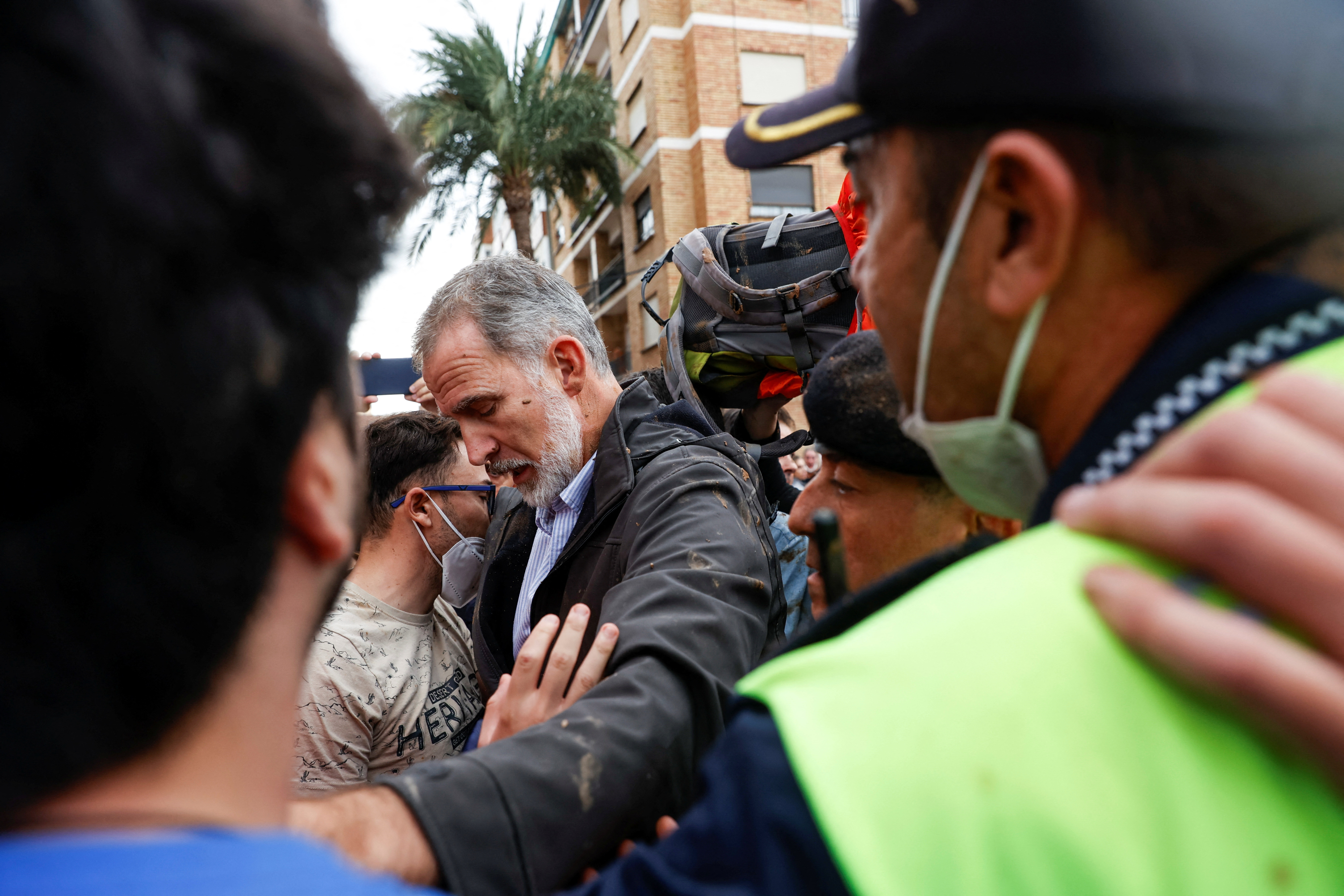 Spain’s King Felipe reacts as he has mud on his face, following heavy rains that caused floods, in Paiporta, near Valencia, Spain, November 3, 2024. REUTERS/Eva Manez.
Spain’s King Felipe reacts as he has mud on his face, following heavy rains that caused floods, in Paiporta, near Valencia, Spain, November 3, 2024. REUTERS/Eva Manez.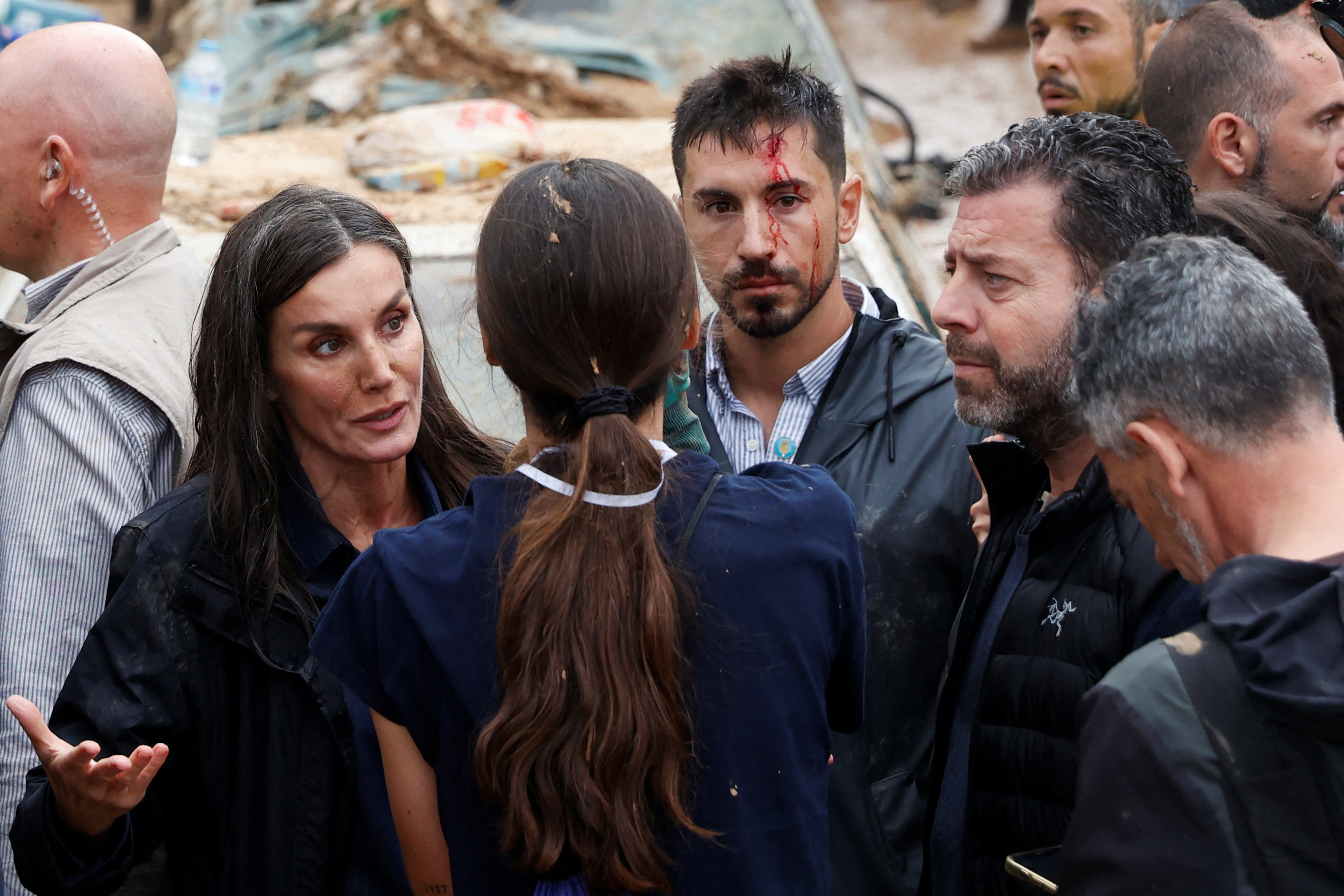 Spain’s Queen Letizia speaks to people next to a man with blood on his face, following heavy rains that caused floods, in Paiporta, near Valencia, Spain, November 3, 2024.
Spain’s Queen Letizia speaks to people next to a man with blood on his face, following heavy rains that caused floods, in Paiporta, near Valencia, Spain, November 3, 2024. Members of the Spanish Civil Guard patrol as people protest during a visit of Spain’s King Felipe, following heavy rains that caused floods, in Paiporta, near Valencia, Spain, November 3, 2024.
Members of the Spanish Civil Guard patrol as people protest during a visit of Spain’s King Felipe, following heavy rains that caused floods, in Paiporta, near Valencia, Spain, November 3, 2024.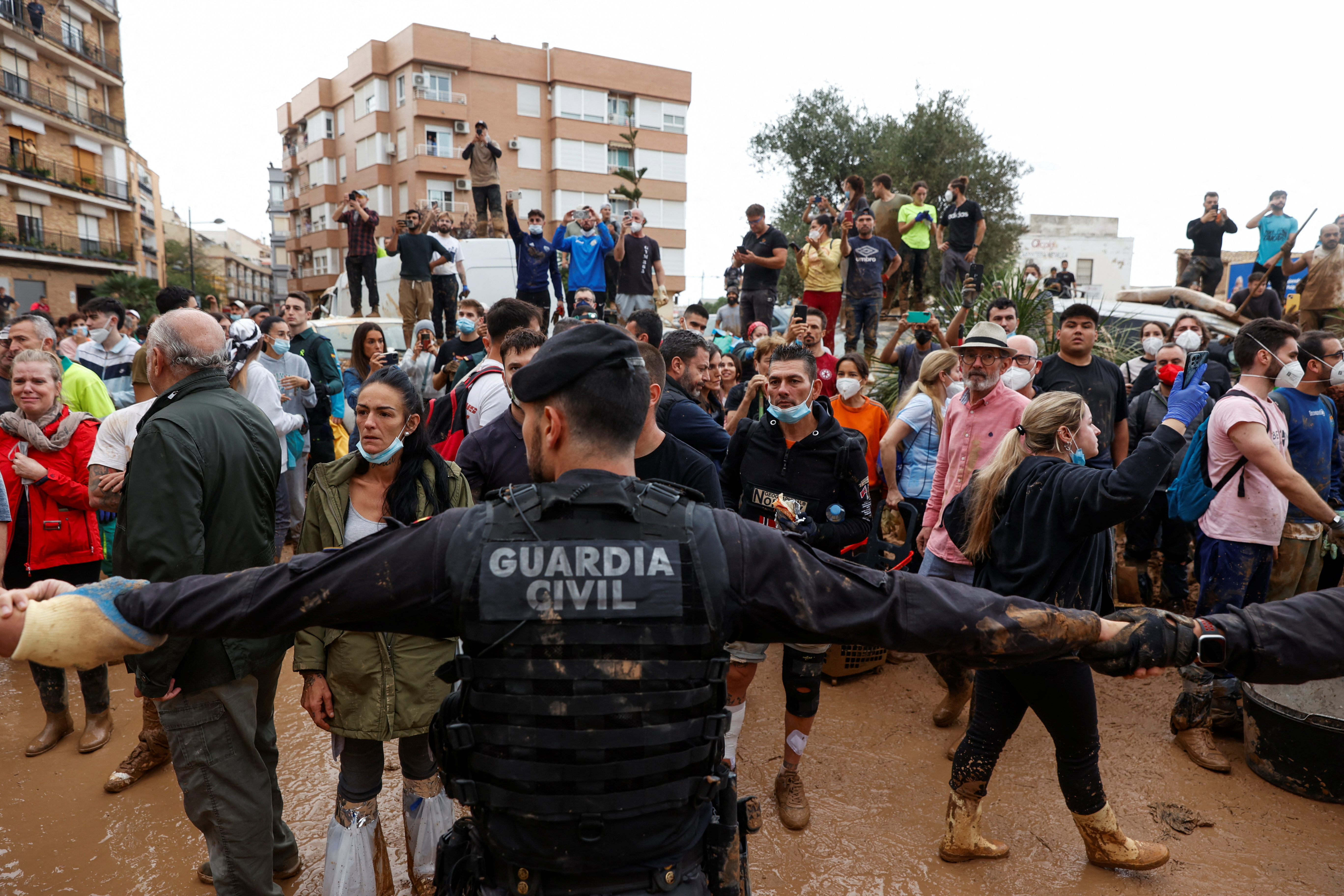 People protest during a visit of Spain’s King Felipe, following heavy rains that caused floods, in Paiporta, near Valencia, Spain, November 3, 2024.
People protest during a visit of Spain’s King Felipe, following heavy rains that caused floods, in Paiporta, near Valencia, Spain, November 3, 2024.

